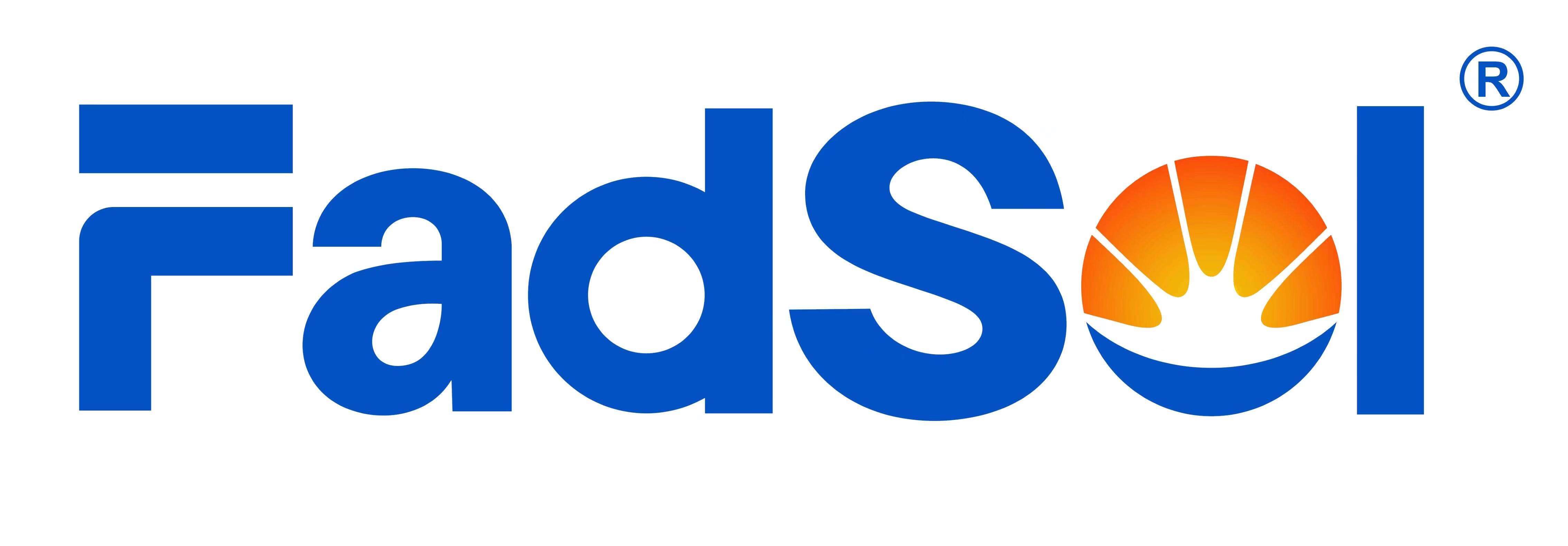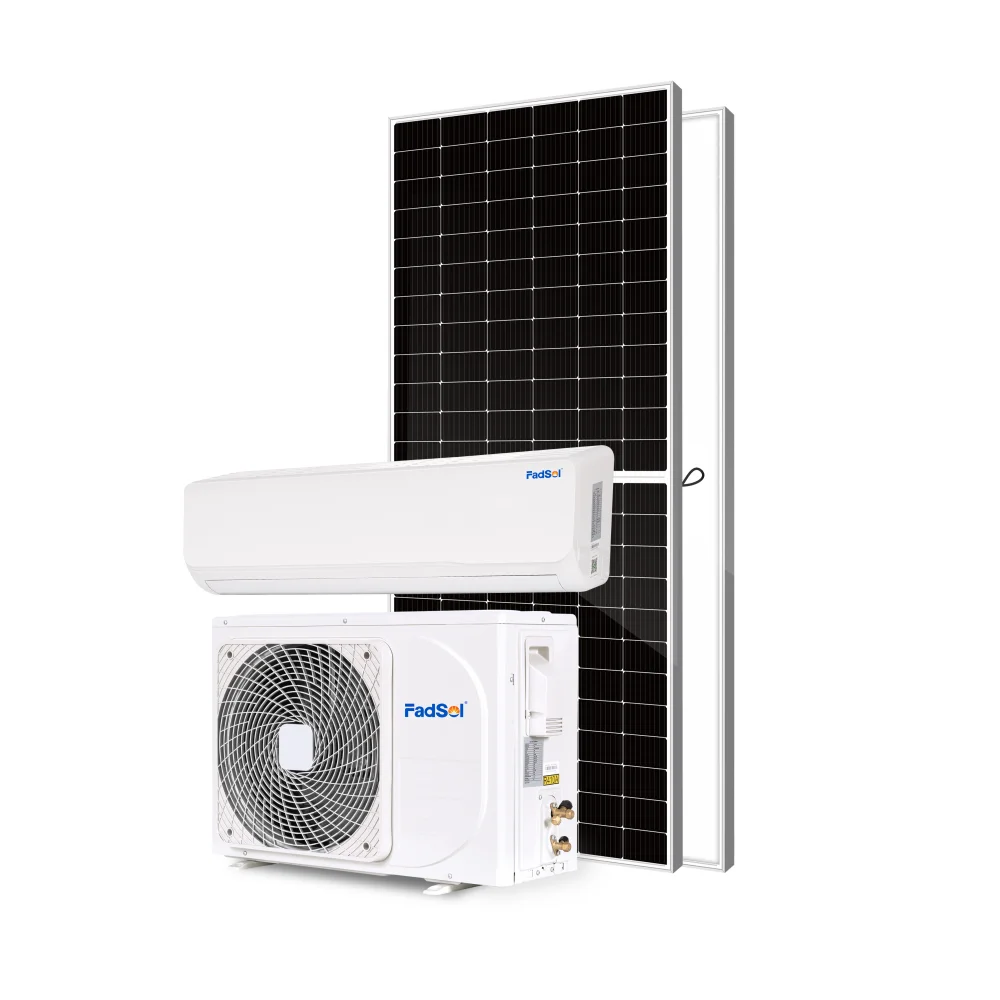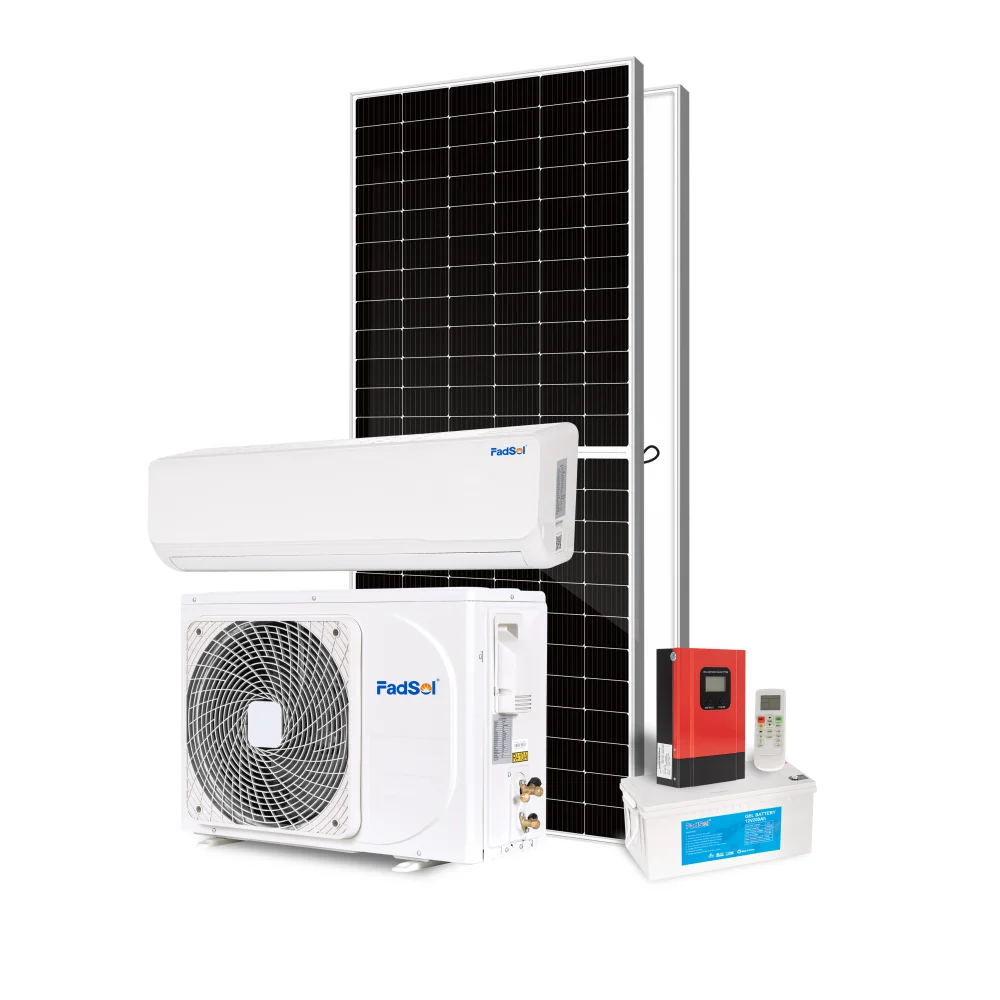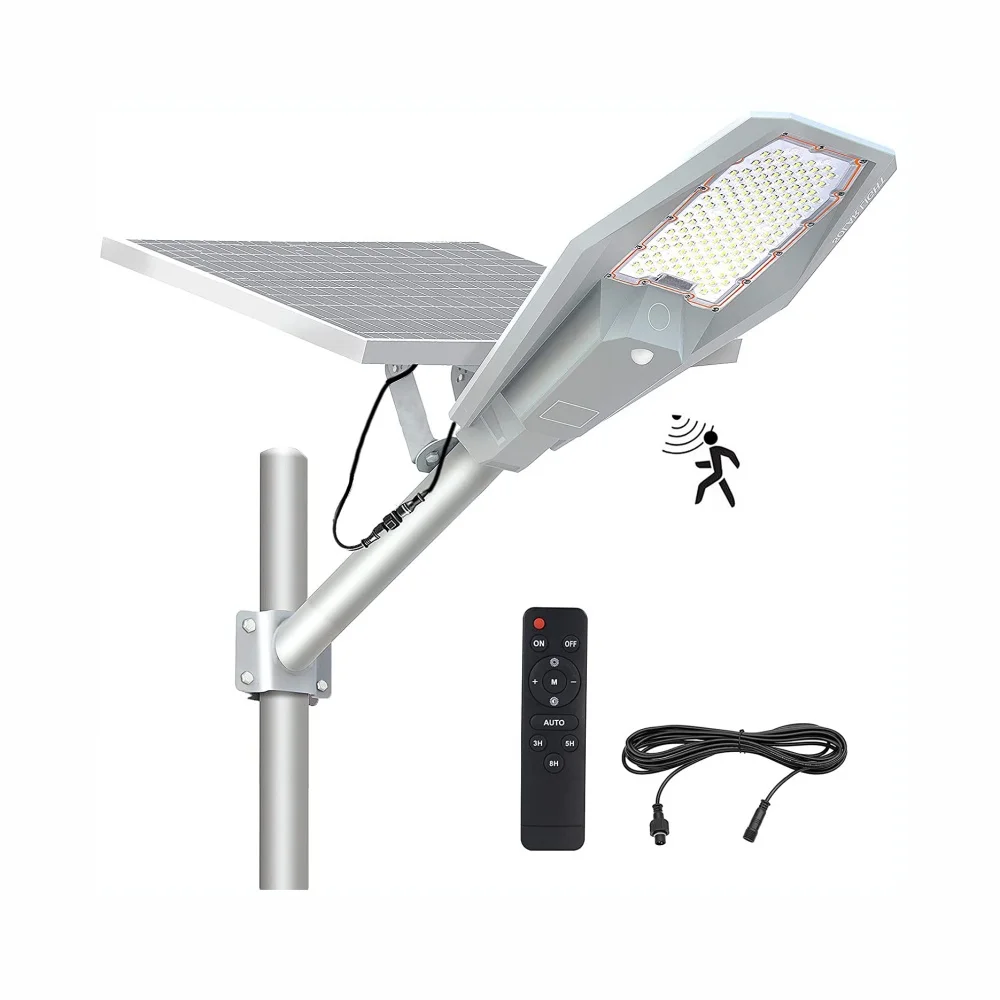Viwango vya Hali ya Hewa ya Jua kutoka kwa Wauzaji wa China Kukutana na Mahitaji ya Kimataifa
Kuelewa Vifaa vya Kupasha Hewa kwa Jua
Kiyoyozi cha jua ni teknolojia ya ubunifu inayotumia nishati ya jua kama chanzo chake cha msingi cha nishati kupoza nafasi. Ni iliyoundwa ili kupunguza utegemezi wa kawaida, yasiyo ya upya vyanzo vya nishati, na kuifanya uchaguzi kirafiki na endelevu kwa ajili ya matumizi ya makazi na kibiashara. Kwa kutumia nishati ya jua, viyoyozi vya jua vinaweza kusaidia kupunguza uzalishaji wa kaboni unaohusiana na mifumo ya jadi ya baridi, na kutoa njia mbadala ya kijani kibichi ya kudhibiti joto.
Uendeshaji wa mitambo ya jua ya hali ya hewa ni tofauti na ile ya mifumo ya jadi HVAC. Mifumo hiyo imejengwa ili kuunganisha mwangaza wa jua kupitia paneli za umeme wa jua (PV), ambazo hubadilisha nishati ya jua kuwa umeme. Kisha umeme huo hutumiwa kuendesha kifaa cha kubadili hewa. Tofauti na mifumo ya kawaida ambayo hutegemea tu umeme au mafuta ya viini, vinjari vya jua hutumia nishati hiyo, ambayo husaidia kupoza vyumba vya ndani na pia huongeza ufanisi wa nishati. Ushirikiano huu wa nishati mbadala huweka kando viyoyozi vya jua, na kuwaruhusu kuwa sehemu ya suluhisho endelevu za nishati ambazo zinakidhi mahitaji ya kisasa ya mazingira.
Faida za Vipimo-hewa vya Jua Katika Masoko ya Kimataifa
Vifaa vya jua vya kubadilisha hewa vina faida nyingi kwa masoko ya kimataifa, kuanzia na faida za mazingira. Kwa kutumia nishati ya jua, mifumo hiyo hupunguza sana gesi zinazoleta chafu na kupunguza kutegemea nishati za viini. Kulingana na Idara ya Nishati ya Marekani, mifumo ya kawaida ya kubadili hewa huchangia sana kuondoa kaboni, na tani milioni 117 za kaboni huondolewa kila mwaka nchini Marekani pekee. Kwa upande mwingine, vifaa vya kubadili hewa vinavyotumia nishati ya jua vinaweza kusaidia kupambana na mabadiliko ya hali ya hewa ulimwenguni pote.
Kwa upande wa kuokoa gharama, mifumo ya nishati ya jua hutoa faida kubwa ya kifedha kwa muda mrefu. Ingawa kuanzisha awali inaweza kuwa juu, kupunguza bili za nishati kwa muda ni muhimu. Watumiaji wanaweza kuzalisha umeme wao wenyewe, mara nyingi kusababisha kupungua kwa utegemezi wa makampuni ya huduma. Kulingana na Shirika la Habari za Nishati la Marekani, gharama za kiyoyozi huchangia asilimia 12 hivi ya matumizi ya nishati nyumbani. Zaidi ya hayo, mikoa mingi hutoa misaada ya kifedha, kama vile mikopo ya kodi na punguzo, ili kulipia gharama za ujenzi. Kwa mfano, mikopo ya kodi ya shirikisho inaweza kupunguza gharama ya mifumo ya jua kwa hadi 26%.
Faida nyingine kubwa ni kujitegemea kwa nishati inayotolewa na viyoyozi vya jua. Kwa kuruhusu watumiaji kuzalisha umeme wao wenyewe, mifumo hii hupunguza hatari ya kushuka kwa bei ya nishati na kukatika kwa umeme. Wamiliki wa nyumba na biashara wanaweza kufurahia ugavi wa nishati thabiti, bila kuathiriwa na mabadiliko ya vyanzo vya nishati ya jadi. Uhuru huu sio tu huongeza kwa gharama nafuu ya hali ya hewa ya jua lakini pia inaambatana na mwenendo wa kimataifa kuelekea ufumbuzi wa nishati endelevu.
Aina Mbalimbali za Vipulizi vya Hewa vya Jua
Vipimo-hewa vya jua vimepata umaarufu haraka, na hivyo kutoa njia nyingine isiyoharibu mazingira badala ya mfumo wa kawaida wa kupoza hewa. Kuna aina tatu za msingi za mifumo ya jua ya hali ya hewa, kila moja na sifa tofauti na njia za uendeshaji.
1. Solar PV Air Conditioners
Mfumo huo hutumia paneli za jua kugeuza nuru ya jua kuwa umeme na hivyo kuendesha kiyoyozi. Vitengo vile vinaweza kufanya kazi kwa moja kwa moja (DC) au kwa kasi ya kubadilishana (AC), na vitengo vya DC kuwa na ufanisi zaidi kutokana na kupoteza kugeuza kupunguzwa. Solar PV hewa conditioners wanaweza kazi nje ya gridi, kuwafanya uchaguzi bora kwa ajili ya maeneo ya mbali. Mara nyingi hutia ndani betri ili kuokoa joto hata wakati ambapo jua halipatikani.
2. Vifaa vya Kufanyiza Hewa ya Jua
Tofauti na mifumo ya jua ya PV, viyoyozi vya jua hutumia vifaa vya jua vya kukusanya joto. Kisha joto hilo hutumiwa kutokeza mzunguko wa kupoza. Njia hiyo ni yenye matokeo sana, hasa katika maeneo yenye jua kali na usiku baridi. Hutoa usawaziko bora kati ya baridi na joto kwa matumizi ya makazi na biashara.
3. Mifumo ya Kichini
Mifumo hii kuchanganya nishati ya jua na vyanzo vya kawaida vya nishati ili kuhakikisha utendaji thabiti katika hali tofauti ya hali ya hewa. Kwa kutumia vyanzo vyote viwili, viyoyozi vya jua vinafanya kazi kwa ufanisi na kwa kutegemeka. Wakati wa mchana, wao hutegemea hasa nishati ya jua, huku jioni au wakati wa mawingu, wanaweza kutumia umeme wa gridi, na hivyo kuwa na uwezo wa kutumia umeme katika hali mbalimbali za hewa.
Kwa kumalizia, kuchagua aina inayofaa ya kiyoyozi cha jua kunategemea mahitaji ya mtu mmoja-mmoja, eneo lake, na matumizi ya nishati. Kila mfumo hutoa faida ya kipekee ambayo kuchangia kuokoa nishati na uendelevu wa mazingira.
Jinsi Mikukuzi ya Hewa ya Solar Inafanya Kazi
Vifaa vya jua vya kubadilisha hewa hubadili nishati ya jua kuwa nishati inayoweza kutumiwa, hasa kupitia paneli za jua. Paneli hizo hutumia mwangaza wa jua na kuubadilisha kuwa umeme wa moja kwa moja (DC) kwa kutumia nishati ya jua. Kisha umeme huo wa DC unaelekezwa kwenye inverter, ambayo huubadilisha kuwa umeme wa mtiririko wa mpito (AC) ili kuendesha vifaa vya hali ya hewa. Matumizi haya ya moja kwa moja ya nishati ya jua husaidia kupunguza utegemezi kwenye gridi na kupunguza gharama za umeme.
Ushirikiano wa ufumbuzi wa kuhifadhi nishati, kama vile mifumo ya betri, ni muhimu kwa ajili ya kazi thabiti ya mifumo ya jua hewa, hasa wakati wa saa si jua. Betri hizo huhifadhi nishati ya jua inayotokezwa mchana, na hivyo kufanya iwe rahisi kuizuia usiku au siku zenye mawingu. Ufanisi wa mifumo hii inaweza kuimarishwa kwa kuchagua betri na uwezo wa kuhifadhi juu na utendaji ratings, catering kwa mahitaji ya nishati wakati nishati ya jua ni inapatikana.
Zaidi ya hayo, mifumo ya jua ya hewa inaweza kuunganishwa kwa urahisi na mifumo ya HVAC iliyopo, na kutoa mpito laini kwa nishati ya jua. Hilo linaweza kufanywa kwa kutumia miundo mbalimbali, kama vile mifumo ya mseto inayochanganya nishati ya jua na nishati ya kawaida. Kuweka aina hii huongeza robustness na kuegemea ya ufumbuzi baridi, kuhakikisha ugavi thabiti wa nishati bila kujali hali ya jua. Kuunganisha mifumo hii inaweza kuchangia kwa kiasi kikubwa kupunguza matumizi ya nishati kwa ujumla na kukuza matumizi endelevu ya nishati.
Magumu na Mambo Yanayohitaji Kufikiriwa
Tunapofikiria vifaa vya kubadilisha hewa kwa kutumia nishati ya jua, mojawapo ya matatizo makubwa ni gharama ya awali. Mifumo ya hali ya hewa ya jua huwa na gharama kubwa ya awali ikilinganishwa na mifumo ya hali ya hewa ya jadi. Hii ni pamoja na gharama zinazohusiana na paneli za jua, inverters, na ada ya uwezekano wa ufungaji. Kwa mfano, wakati kifaa cha kawaida cha AC kinaweza kugharimu dola mia chache, kifaa cha jua kinaweza kuwa maelfu, hasa ikiwa sehemu zote zinazohitajiwa kwa ajili ya utendaji wa jua zinazingatiwa. Licha ya uwekezaji wa awali, akiba ya muda mrefu kwenye bili za nishati na motisha za kodi zinazopatikana mara nyingi zinaweza kusawazisha gharama hizi kwa muda.
Jambo jingine muhimu ni hali ya hewa. Vifaa vya kubadili hewa vinavyotumia jua hufanikiwa katika maeneo yenye mwangaza mwingi wa jua kwa kuwa vinategemea paneli za jua kutokeza nishati. Katika maeneo yenye jua, mifumo hiyo hufanya kazi vizuri. Hata hivyo, katika maeneo yenye mawingu mengi au mvua, ufanisi na kuegemea kwa vifaa vya jua vya kubadilisha hewa kunaweza kuathiriwa. Ni muhimu kwa watumiaji uwezo wa kutathmini hali ya hewa yao ya ndani na jua mfiduo kuamua kama mfumo wa jua hali ya hewa itakuwa na ufanisi na ufanisi katika eneo lao maalum kijiografia.
Mwishowe, matengenezo na kutegemeka huingia katika mchezo. Ingawa mifumo ya jua ya hali ya hewa inahitaji matengenezo kidogo ikilinganishwa na vitengo vya jadi, matengenezo fulani ni muhimu ili kuhakikisha utendaji bora. Kusafisha paneli za jua kwa ukawaida na kukagua kwa ukawaida vifaa vya mfumo husaidia kudumisha ufanisi na kuongeza muda wa kuishi kwa mfumo huo. Changamoto zinazowezekana zinaweza kuhusisha haja ya kubadilisha au kurekebisha sehemu maalum, kama vile inverters au udhibiti wa malipo, ambayo inaweza kusababisha gharama za ziada. Kuelewa mambo hayo kutasaidia kufanya uamuzi sahihi kuhusu matumizi ya mfumo wa kubadilisha hewa kwa kutumia nishati ya jua.
Vitabu Vipofu katika Kiyoyozi cha jua Soko
Funguo Kiyoyozi Solar Powered Kiyoyozi AC DC Hybrid 18000btu ni chaguo maarufu kwa wale kufikiria jua hewa. Hii mfano mseto inatoa kubadilika na AC na DC umeme, kuhakikisha kazi hata wakati nishati ya jua ni mdogo. Inajivunia uwezo baridi ya 9000 BTU, na kuifanya yanafaa kwa ajili ya nafasi ndogo wakati kutoa baridi ufanisi. Wapendaji wa vifaa hivyo wanathamini sana mazingira yake, kutia ndani teknolojia ya kuzuia kutu na matumizi ya R410a.
Bidhaa nyingine muhimu ni 24000BTU Solar Powered Air Conditioner Solar Inverter Nishati ya Nyumbani Mfumo DC Off Grid , ambayo ni maalum iliyoundwa kwa ajili ya mazingira nje ya gridi. Mfumo huu imara unaweza kushughulikia nafasi kubwa na uwezo wake 24000 BTU, mkono na nguvu inverter mfumo. Mbali na gridi ya umeme, ina uwezo mkubwa wa kuendesha magari katika maeneo ya mbali, na inaweza kushughulikia mazingira mbalimbali.
Hatimaye, Nje ya bustani Wall Mwanga Sensor Motion Integrated Solar Powered Street Lamp unachanganya teknolojia ya jua na taa. Hii ubunifu nje taa ina sensor mwendo kwa ufanisi wa nishati na chaguzi mbalimbali wattage kukidhi mahitaji mbalimbali ya ufungaji. Ni inaonyesha uwezekano wa teknolojia ya jua zaidi ya mifumo ya jadi hewa.
Hitimisho Kuhusu Baadaye ya Vifaa vya Jua vya Kufyonza Hewa
Soko la mifumo ya jua ya hewa ni tayari kwa ajili ya ukuaji mkubwa, kutoa mabadiliko ya kuahidi katika mifumo ya matumizi ya nishati. Tunapochunguza uwezo wa mifumo hii, ni wazi wanaweza kupunguza sana utegemezi wa mafuta ya makaa ya mawe huku wakiendeleza uendelevu wa mazingira. Mabadiliko haya yanaambatana na kuongezeka kwa msisitizo wa kimataifa juu ya vyanzo vya nishati mbadala na inasimama kubadilisha ufumbuzi wa baridi wa makazi na biashara.
Kwa kutazama mbele, maendeleo ya kitekinolojia yatafanya vifaa vya kubadili hewa kwa kutumia nishati ya jua viwe vyenye ufanisi zaidi na kuvutia zaidi. Wataalamu wanatabiri matumizi ya kina zaidi kwa sababu ya kuboresha gharama na ufanisi na utendaji. Kwa wakati, tunaweza kutarajia mifumo hii kuwa vipengele vya kawaida katika majengo ya akili na nyumba za kijani, kubadilisha jinsi tunavyoshughulikia udhibiti wa hali ya hewa.
 EN
EN
 AR
AR FR
FR DE
DE IT
IT PL
PL PT
PT RU
RU ES
ES SW
SW HA
HA



